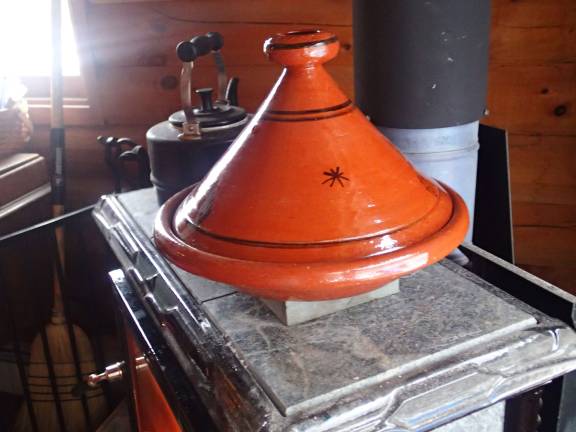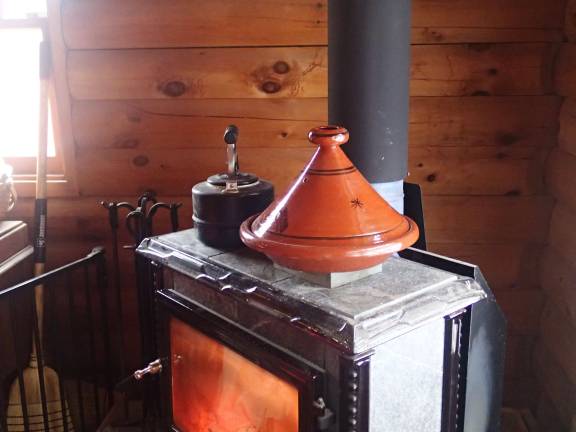Seven days without our favorite fossil fuel


It was the “crashed-down house” that made us cautious. That’s what four-year-old Kai calls the house near her school, which was standing one day, and the next, was a pile of rubble. Nobody was hurt, miraculously. The culprit was a gas leak.
So when one of our stove’s burners took to leaping higher than the others, husband Joe called the propane company to come take a look. The gas man showed up and agreed it was a problem. He’d have to cap the propane line.
Say what?
He gestured to the children. “I can’t leave it like this.”
It was one of those moments, like at a hospital or airport, when you’re not sure what happens should you disobey the guy in uniform. Did he have the law on his side? Did we want to find out?
If I’d had more energy I might have fought him: seriously, bro, we just won’t use that burner. We don’t want our house to explode with our children in it, either. Instead, we nodded. He capped the line and was gone (a service for which we would receive a $173 bill) .
Thanks, gas man! On the bright side, maybe this would help wean us off fossil fuels. We’ve gotten off heating oil, cutting and lugging all our firewood, and when we’re feeling virtuous we line dry our clothes. Losing the dryer was no big deal, but life without a stove was going to be interesting. What were we going to do about dinner? We looked around, tallying our resources: toaster oven, crock pot, wood burning stove, microwave. We also, randomly, had just acquired a tagine, a North African cooking vessel that my dad had never used and was getting rid of.
The kitchen is Joe’s territory, and he adapted quickly. Oatmeal, coffee and even shakshuka came off the wood burning stove, quesadillas and baked zucchini out of the toaster oven. Still, with his capacity diminished, I saw my opening. I eyed that tagine.
Saturday morning, I poked around online. Used by the nomadic Berbers, the tagine served as cooking and serving and eating vessel. Talk about one-pot meals. The first order of business was to season my tagine in the oven so it wouldn’t crack. Couldn’t do that. I’d just skip to the recipe part.
I drizzled in olive oil and Kai and I went to town chopping vegetables, adding spices like paprika I’d never touched in my life. I put the tagine on a piece of soapstone on top of the stove, hoping the buffer would keep it from getting too hot and cracking. I poured in homemade chicken stock and a can of black beans. Then Kai and I went sledding. After all, sitting there watching it wasn’t going to protect the tagine from the laws of thermodynamics.
When we got home, the tagine still simmered on the stove, mercifully intact. I added dried fruit and couscous. Joe tasted it and wordlessly carried it to the table, skepticism written all over his face.
I got out the sliced almonds and green olives, the recommended garnishes, whose presence in our cabinet was almost too much. There between packets of Chinese food sauces and a tub of peanut butter, we had sliced almonds?
Spoons clinked. No one heaped praise upon my masterpiece, which was, I admit, a little dry. But everyone in the family was eating it. (Well, Kai was only eating the beans, which I had to suck beforehand to remove the couscous. This is normal in our house.) I felt like doing a touchdown dance on the Lazy Susan. I, the bush league cook, had not only prepared dinner in an exotic vessel that required no additional fuel to operate, but I’d also made enough food for lunch the next week and had dirtied only one dish in the process.
My confidence soaring, the next day I tried roasting root veggies in a Pyrex pan over an outdoor fire. It was looking good, until it shattered. So I’m batting .500.
The next week, I got an email from Joe, subject line “stove’s fixed!” I pictured him doing his best Odell Beckham Jr. on the kitchen counter. This was a big deal in our house.
The gas man, see, had recommended we scrap our stove and buy a new one. Toss the stove, you say? Maybe one day, and we’ll get an electric one, which will run off our solar panels, but that day is not today. Game on.
Joe, a fledgling carpenter, has gotten good at working with wood. A staircase and playground testify to his increasing skill. But fixing a stove involves metal, valves, and no margin of error. A memory comes to me of my mom being blown across the kitchen while lighting the pilot. She was okay. Her eyebrows, not so much.
Joe disassembled the burner and found the offending part, which was rusted through. He ordered a new part online (lovingly tracking its progress through the mail system), installed it with help from YouTube, and called the propane company to hustle on back to our house. They had just OK’d his work and reconnected the gas line.
Dropkick that dish towel, baby.